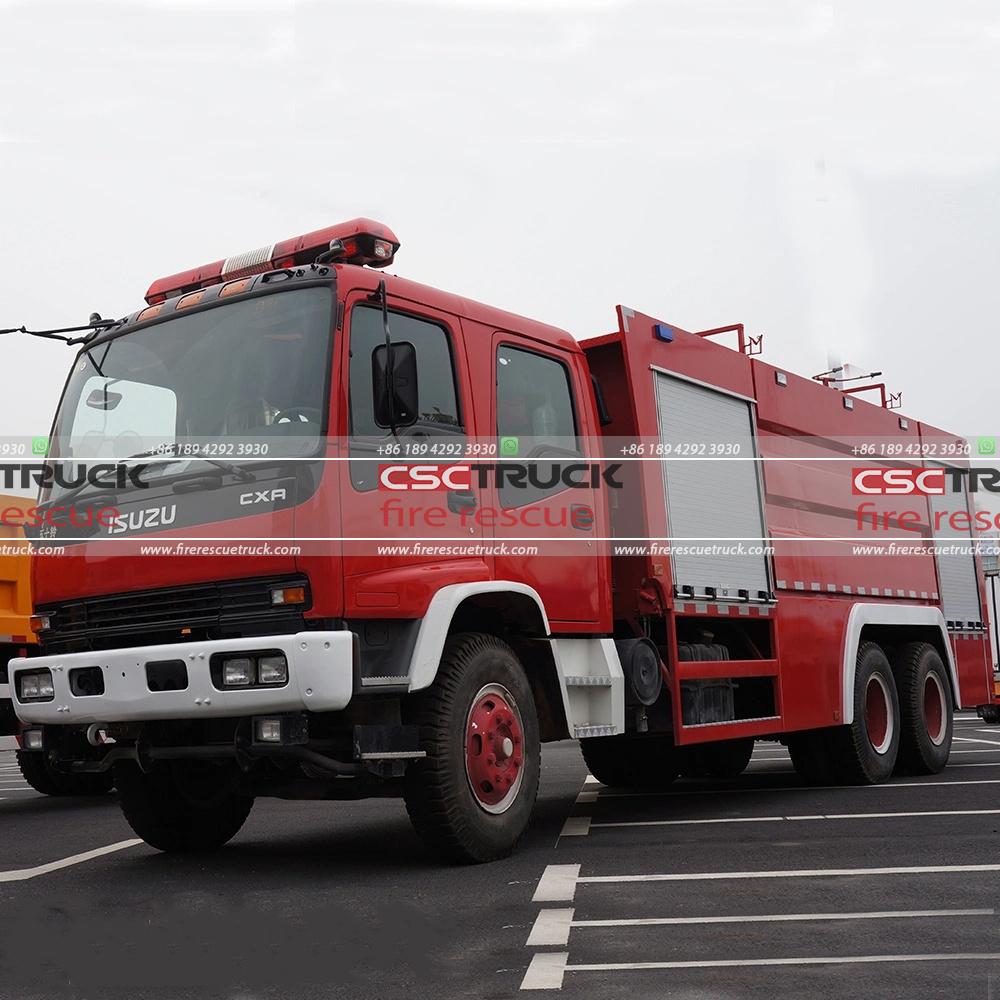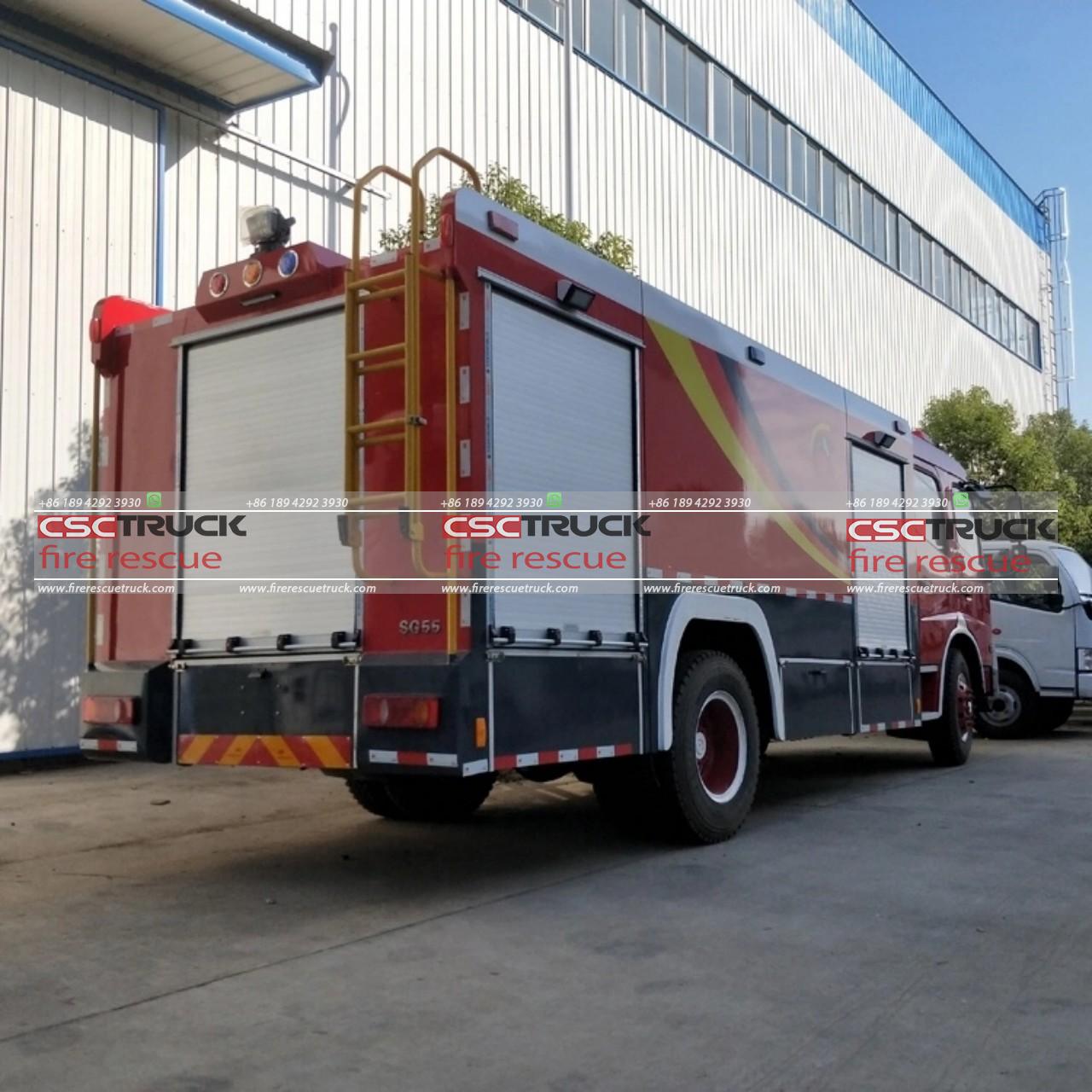In the world of firefighting, every second counts. When flames rage and lives are at stake, the ability to combat fires swiftly and effectively is paramount. Traditional fire suppression methods have long relied on water as the primary extinguishing agent. However, in recent years, foam fire trucks have emerged as a crucial tool in the firefighting arsenal, offering a more efficient and precise approach to tackling flames. With their ability to smother fires rapidly and reduce water usage, foam fire trucks represent a significant advancement in firefighting technology. This article explores the innovative features and benefits of foam fire trucks and their role in enhancing fire response capabilities.
The Evolution of Fire Suppression Technology:
The history of fire suppression is marked by continual innovation and advancement. From the earliest bucket brigades to modern-day firefighting apparatus, the goal has always been to extinguish fires quickly and safely. Water has been the primary extinguishing agent for centuries, owing to its abundance and effectiveness in cooling and smothering flames. However, as fire dynamics and environmental concerns have evolved, so too have the methods and tools used to combat fires.
Foam fire trucks represent a significant evolution in fire suppression technology. Unlike traditional water-based systems, foam offers several distinct advantages. Foam is highly effective at suppressing flames by forming a thick blanket that seals off the fire’s oxygen supply, preventing it from spreading. Additionally, foam has superior cooling properties, allowing it to absorb heat more efficiently than water alone. These qualities make foam an ideal choice for extinguishing a wide range of fires, including flammable liquid and chemical fires, as well as wildfires.

The Innovative Features of Foam Fire Trucks:
Foam fire trucks are specially designed vehicles equipped with advanced firefighting capabilities. One of the key features of foam fire trucks is their onboard foam generation system. These systems mix water with foam concentrate to produce a foam solution that is then dispensed through specialized nozzles. The foam solution can be adjusted to achieve different concentrations, allowing firefighters to tailor their approach based on the type and size of the fire.
Another innovative feature of foam fire trucks is their foam proportioning systems. These systems ensure that the correct ratio of foam concentrate to water is maintained, optimizing the effectiveness of the foam solution. By precisely controlling the foam concentration, firefighters can achieve maximum extinguishing power while minimizing water usage. This is particularly important in situations where water conservation is a concern, such as in arid environments or during drought conditions.
Foam fire trucks also typically feature high-capacity foam tanks, allowing for extended operation without the need for frequent refills. This ensures that firefighters have ample foam supply to tackle even the largest and most stubborn fires. Additionally, foam fire trucks may be equipped with auxiliary equipment such as foam cannons or monitors, which can deliver foam over long distances with precision, further enhancing their firefighting capabilities.
The Benefits of Foam Fire Trucks:
The adoption of foam fire trucks has brought about numerous benefits for firefighting agencies and communities alike. One of the most significant advantages is their ability to extinguish fires more quickly and effectively than traditional methods. The rapid deployment of foam can smother flames in a fraction of the time it would take with water alone, reducing the overall duration and intensity of the fire.
Furthermore, foam fire trucks offer improved safety for firefighters and bystanders. By quickly suppressing flames and reducing heat, foam helps create a safer environment for firefighters to operate in. Additionally, foam is less likely to cause thermal shock or damage to sensitive equipment, making it ideal for use in industrial settings or areas with delicate infrastructure.
Another key benefit of foam fire trucks is their environmental friendliness. Foam is biodegradable and non-toxic, minimizing the impact on ecosystems and water sources. Additionally, the reduced water usage associated with foam firefighting helps conserve water resources, which is especially important in regions prone to drought or water scarcity.
Foam fire trucks are also versatile tools that can be deployed in a wide range of scenarios. From industrial fires to hazardous material incidents to wildfires, foam fire trucks offer a flexible solution for combating fires of all types. Their ability to deliver foam with precision over long distances makes them invaluable assets in complex firefighting operations.

Conclusion:
In the ever-evolving landscape of firefighting technology, foam fire trucks stand out as a testament to innovation and progress. With their advanced features and capabilities, these specialized vehicles are revolutionizing the way fires are extinguished, offering faster, safer, and more environmentally friendly solutions. As fire departments around the world continue to invest in foam fire trucks, the future of firefighting looks brighter than ever, with the promise of swifter and more effective responses to the flames that threaten our communities.







